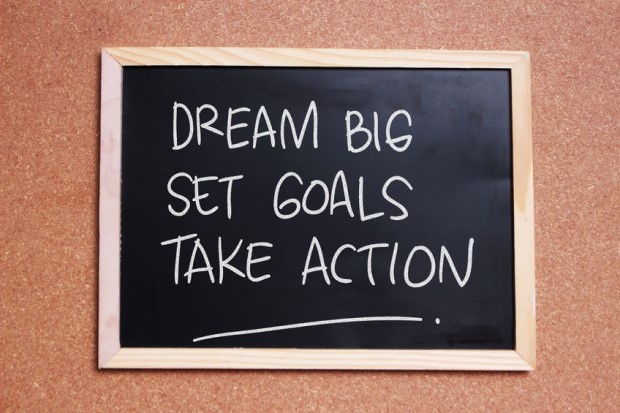
A Child’s Approach to Goal Setting
Kids have no problems with goal setting. If they want to do something, they confidently proclaim that they are going to do it. If you’ve interacted with small kids at all, chances are you have heard them make statements like this…
“I’m going to be an astronaut!”
“I want to be a dancer!”
“I’m going to be a firefighter just like Pop Pop!”
Not only do they make confident declarations, but they also have absolute faith that they can be anything they can imagine.
When a kindergartener shouts, “I’m going to be an astronaut,” most adults are supportive and say something like, “That’s great Tori! The next time we’re at the library we can look for books about astronauts. Maybe you could even dress up as one for Halloween!”
But as kids get older, something funny happens. The people around them stop this unequivocal support and start asking the dreaded “How” questions.
An adolescent proclaims, “I’m going to be on the US Olympic Team!” and Dad’s automatic response is, “How are you going to do that? Don’t they train for like six hours a day or something?”
A middle-schooler says, “I’m going to be a dancer!!” and Mom says, “You know sweetheart, most dancers have a hard time finding work and don’t make much money. How are you going to support yourself if you’re working at that kind of job?”
Another teen declares, “I’m going to college to be a Doctor!” Her parents light up and say, “That’s great! There is always a need for doctors. Maybe we could visit a couple of good pre-med schools this summer!”
Parental Messages on Goal Setting
Without knowing it, parents are sending a clear message to their kids about goal setting. This message is:
- Any time you have a goal, whether it is big or small, you should immediately ask yourself a series of “how” questions.
- If you don’t know all of the steps required to achieve this goal, or there is a possibility that working to achieve this goal will create some discomfort (for example if it will require a lot of time, or a lot of money, or you might look foolish while learning new things, etc.) then you should abandon this goal and move on to something else.
- You should wait until you know exactly how you are going to achieve the goal and until you have the support and approval of those around you before taking any actions toward achievement of the goal.
Kids who repeatedly receive this message often turn into adults who play it safe and forgo going after what they really want in life. By many measures, they end up with a life that is good and comfortable. But is it a life that they can’t wait to jump out of bed and live each day?
Rewrite Your Goal Setting Script
Now ask yourself – do you think people who actually become Olympic athletes follow the message above? How about when Thomas Edison first started thinking about the light bulb? Or Steve Jobs when he was thinking about starting Apple back in the 1970’s and computers were the size of small buildings? Of course they didn’t!
These people and many others employ a different thought process to achieve goals:
- When you have a dream, idea or goal, whether it is big or small, ask yourself, “Do I really want to do this?”
- If the answer is “Yes,” then create a firm, unshakable belief that it is possible to do so.
- Begin taking action on this goal. As you take action stay confident in your belief of your success. Trust that the “how” will show up although it may be a way you didn’t expect. Also remain open to the outcome matching your definition of success or being something even better.
Thinking about goal setting in this manner may be completely foreign to you. I know it was for me ten years ago! The good news is that with practice this process will become more comfortable. Try it first with goals you are already confident in. Then move on to using it to achieve stretch goals.
Your Assignment
What goals do you want to achieve? List them on a piece of paper. Pick one or two that you feel most comfortable with and give the second process listed above a try. After you have a feel for the process, try it on bigger, more important goals. Use tools like affirmations and visualizations to help you hold on to your belief that success is possible.



